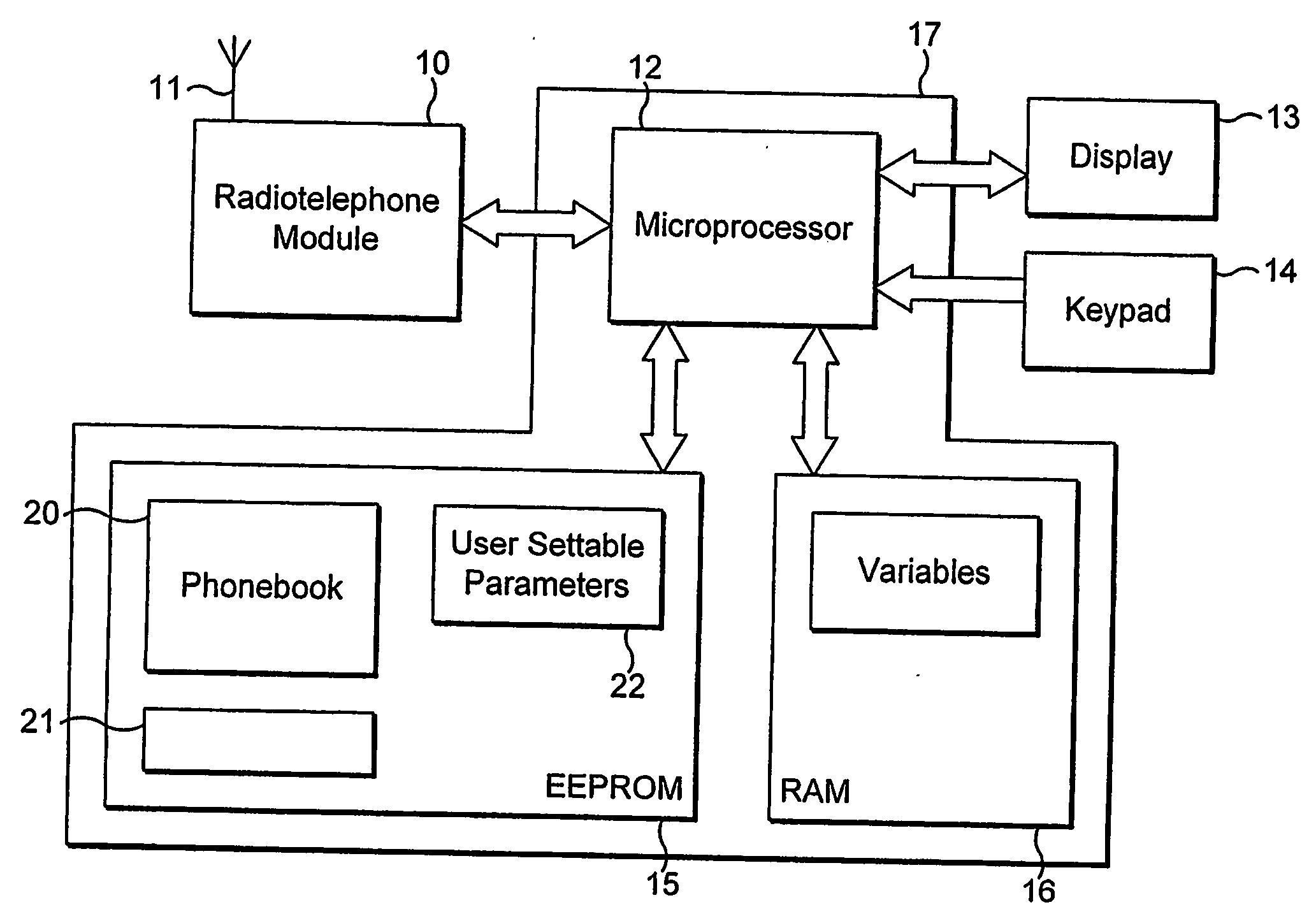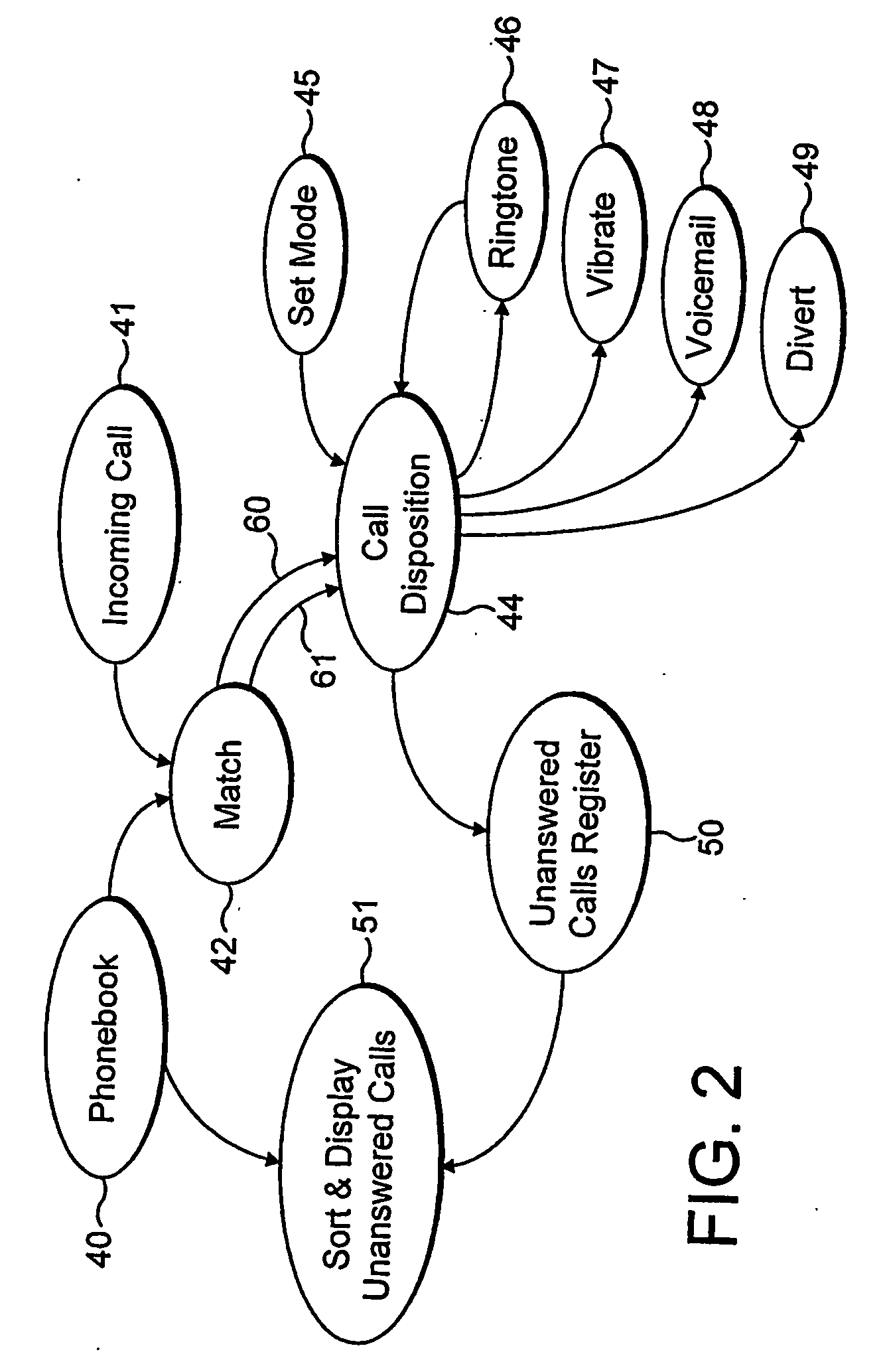Incoming call screening, control and prioritisation in a telephone device
a telephone device and incoming call technology, applied in the field of telephone devices, can solve the problems of limited flexibility and application of the schedule, and achieve the effect of reducing the number of calls and ensuring the quality of the call
- Summary
- Abstract
- Description
- Claims
- Application Information
AI Technical Summary
Benefits of technology
Problems solved by technology
Method used
Image
Examples
Embodiment Construction
[0014]FIG. 1 illustrates a mobile radio telephone device having a radio telephone module 10 (e.g. a GSM or IS-95 standard radio module) coupled to an antenna 11 and a microprocessor 12. Coupled to the microprocessor are a display 13, a keypad 14, a read-only memory (e.g. a flash EEPROM) 15 and a random access memory 16. The microprocessor 12, the ROM 15 and the RAM 16 can together be integrated into a single circuit 17 for forming a telephone when combined with the radio telephone module 10 and the other elements, but it will be understood by those skilled in the art that the various circuits shown can be partially deconstructed and combined in various integrated forms. In the EEPROM 15 there is shown a phone book 20, an unanswered calls register 21 and a set of user-settable parameters 22.
[0015] In operation, the radio telephone module 10 communicates with a radio telephone base station via the antenna 11 and receives calls from other parties (via fixed telephones or other mobile ...
PUM
 Login to View More
Login to View More Abstract
Description
Claims
Application Information
 Login to View More
Login to View More - R&D
- Intellectual Property
- Life Sciences
- Materials
- Tech Scout
- Unparalleled Data Quality
- Higher Quality Content
- 60% Fewer Hallucinations
Browse by: Latest US Patents, China's latest patents, Technical Efficacy Thesaurus, Application Domain, Technology Topic, Popular Technical Reports.
© 2025 PatSnap. All rights reserved.Legal|Privacy policy|Modern Slavery Act Transparency Statement|Sitemap|About US| Contact US: help@patsnap.com



